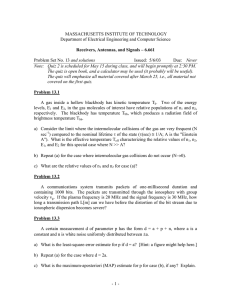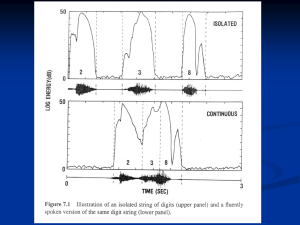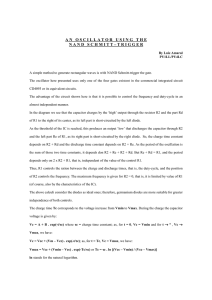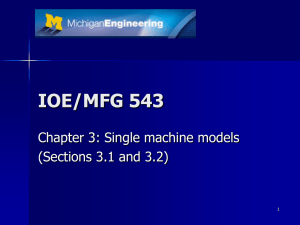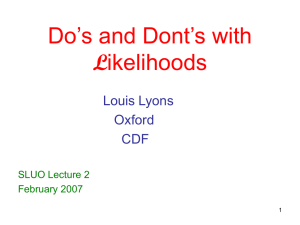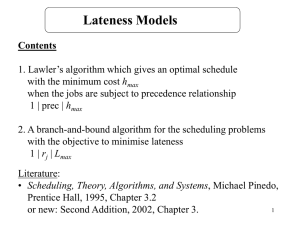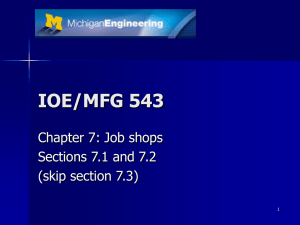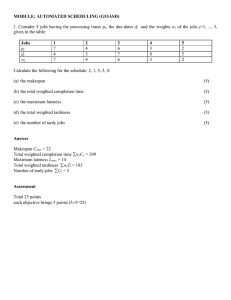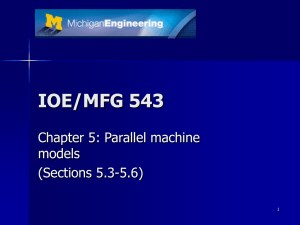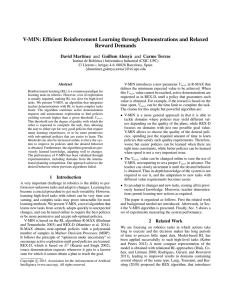Solutions Problem 13.1 = T
advertisement
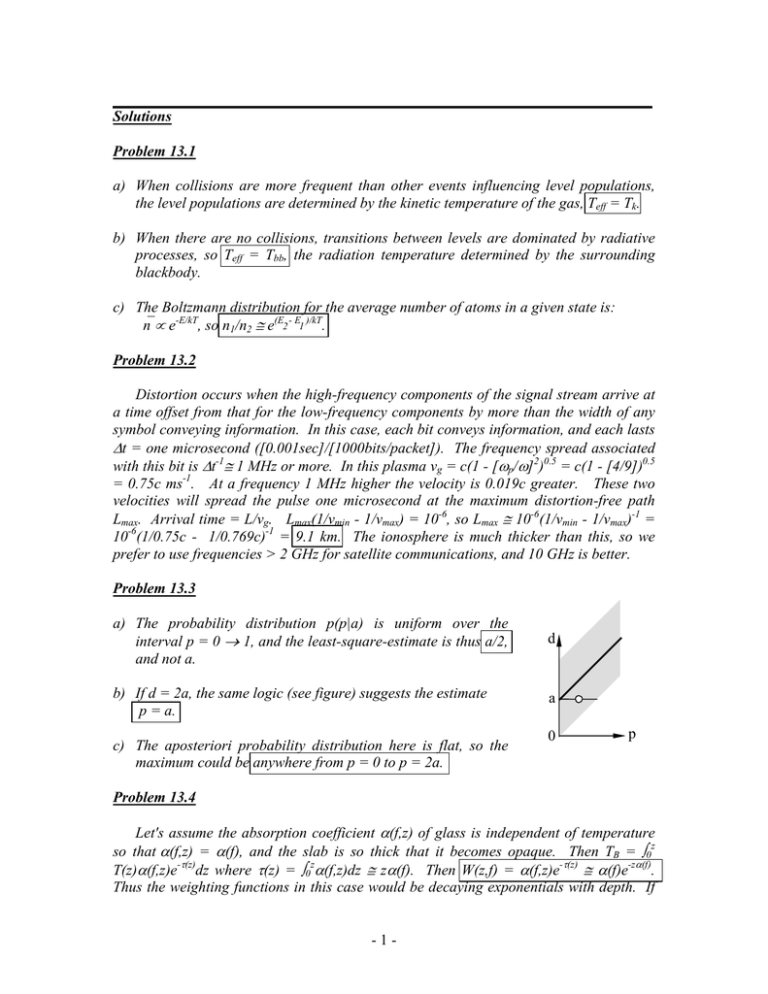
Solutions Problem 13.1 a) When collisions are more frequent than other events influencing level populations, the level populations are determined by the kinetic temperature of the gas, Teff = Tk. b) When there are no collisions, transitions between levels are dominated by radiative processes, so Teff = Tbb, the radiation temperature determined by the surrounding blackbody. c) The Boltzmann distribution for the average number of atoms in a given state is: ⎯n ∝ e-E/kT, so n1/n2 ≅ e(E2 - E1 )/kT. Problem 13.2 Distortion occurs when the high-frequency components of the signal stream arrive at a time offset from that for the low-frequency components by more than the width of any symbol conveying information. In this case, each bit conveys information, and each lasts ∆t = one microsecond ([0.001sec]/[1000bits/packet]). The frequency spread associated with this bit is ∆t-1≅ 1 MHz or more. In this plasma vg = c(1 - [ωp/ω]2)0.5 = c(1 - [4/9])0.5 = 0.75c ms-1. At a frequency 1 MHz higher the velocity is 0.019c greater. These two velocities will spread the pulse one microsecond at the maximum distortion-free path Lmax. Arrival time = L/vg. Lmax(1/vmin - 1/vmax) = 10-6, so Lmax ≅ 10-6(1/vmin - 1/vmax)-1 = 10-6(1/0.75c - 1/0.769c)-1 = 9.1 km. The ionosphere is much thicker than this, so we prefer to use frequencies > 2 GHz for satellite communications, and 10 GHz is better. Problem 13.3 a) The probability distribution p(p|a) is uniform over the interval p = 0 → 1, and the least-square-estimate is thus a/2, and not a. d b) If d = 2a, the same logic (see figure) suggests the estimate p = a. a c) The aposteriori probability distribution here is flat, so the maximum could be anywhere from p = 0 to p = 2a. 0 p Problem 13.4 Let's assume the absorption coefficient α(f,z) of glass is independent of temperature so that α(f,z) = α(f), and the slab is so thick that it becomes opaque. Then TB = ∫0z T(z)α(f,z)e-τ(z)dz where τ(z) = ∫0zα(f,z)dz ≅ zα(f). Then W(z,f) = α(f,z)e-τ(z) ≅ α(f)e-zα(f). Thus the weighting functions in this case would be decaying exponentials with depth. If - 1 - the absorption coefficient were temperature dependent, then the weighting functions would become temperature dependent too. Problem 13.5 a) Most credit-card based measures within purchase categories will vary non-linearly with the personal income of the card holder. For example, there will be essentially zero purchases of items costing more than one's annual income, or some reasonable fraction thereof. And, no matter how wealthy they are, essentially no one will purchase more of something than they can consume in a reasonable time, for example, toothpaste. These non-linearities are plausibly different for different categories of expenditure, no matter what they are. Because there are 100 such nonlinear measures, it is plausible that many possible combinations would yield, on average, an estimate linearly related to personal income, even if the variance of the estimate were high. Averaging over 1000 people to determine the influence of 100 metrics should be reasonably robust. b) Other non-linear credit-card metrics can also be imagined, such as payment history, variances, and fluctuation behavior. In general, metrics relating to the fraction of expenditures for luxury items relative to expenditures for basic needs would be helpful, where ratios are non-linear. Also, the presence of clusters of high-cost purchases versus rationed expenditures could also be informative, particularly if they are discretionary, implying the bank account from which the card bill is paid must be large. - 2 -
